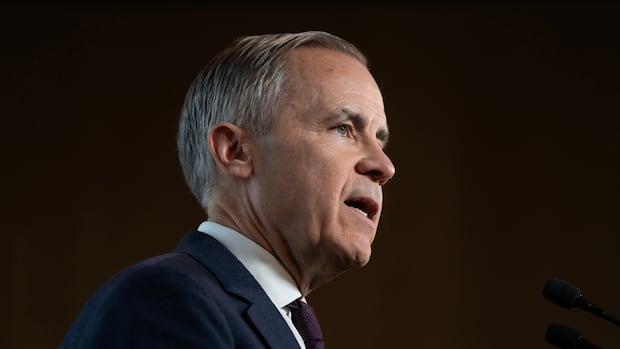Canada Pledges To Meet 2% NATO Defence Spending Target By 2030

Discover more detailed and exciting information on our website. Click the link below to start your adventure: Visit Best Website. Don't miss out!
Table of Contents
Canada Commits to Reaching 2% NATO Defence Spending Target by 2030: A Phased Approach Unveiled
Canada has pledged to finally meet the long-standing NATO target of dedicating 2% of its GDP to defence spending by 2030. This significant announcement, made amidst growing global security concerns and increased pressure from NATO allies, marks a substantial shift in Canadian military policy. The phased approach outlined by the government details a gradual increase over the next seven years, aiming to alleviate concerns about the potential economic impact of such a dramatic increase.
This commitment follows years of Canada falling short of the 2% benchmark, a target agreed upon by NATO members in 2006. The previous Liberal government faced criticism for consistently failing to meet this commitment, sparking debates about Canada's role in collective security and its commitment to its allies. This new pledge represents a clear attempt to address these criticisms and reaffirm Canada's dedication to its international obligations.
A Phased Increase: Details of the Plan
The government's plan involves a staged increase in defence spending, avoiding a sudden and potentially disruptive surge. While specifics regarding the yearly budgetary allocations remain to be fully detailed, the commitment to reaching 2% by 2030 provides a clear roadmap. This phased approach is likely designed to mitigate potential economic backlash and ensure the increased spending is strategically implemented.
This phased approach will allow for:
- Strategic Investment: The gradual increase allows for careful planning and prioritization of crucial defence modernization projects. This includes investments in new equipment, personnel training, and cybersecurity infrastructure.
- Economic Stability: A gradual increase minimizes the potential shock to the Canadian economy, ensuring the defence budget increase doesn't unduly strain other crucial government programs.
- Improved Defence Capabilities: The plan aims to improve Canada's ability to contribute effectively to NATO operations and respond to evolving global security threats.
Challenges and Opportunities
While this commitment is significant, several challenges lie ahead. Successfully implementing this plan will require:
- Effective Budget Management: Careful allocation of resources is crucial to ensure the funds are used efficiently and effectively to modernize the Canadian Armed Forces.
- Addressing Personnel Shortages: The Canadian Armed Forces currently face significant personnel shortages. Attracting and retaining qualified personnel will be vital to realizing the goals of the increased defence spending.
- Maintaining Public Support: Securing and maintaining public support for increased defence spending will be essential for the long-term success of this initiative. Transparency and clear communication regarding the allocation of funds will be critical.
Increased Global Security Concerns Fuel the Decision
The decision to increase defence spending comes against a backdrop of rising global security concerns, including the ongoing war in Ukraine and increasing tensions in other regions. This renewed focus on defence underscores Canada's recognition of the evolving geopolitical landscape and its commitment to collective security within the NATO alliance. The increased investment is intended to bolster Canada's capacity to contribute meaningfully to NATO operations and maintain its commitment to its allies.
Looking Ahead: A New Era for Canadian Defence?
This commitment marks a potential turning point for Canadian defence policy. The success of this initiative will depend on careful planning, effective resource management, and ongoing dialogue with the Canadian public. The coming years will be crucial in determining whether Canada can successfully navigate the challenges and realize the ambitious goals outlined in this plan. The details of the upcoming budget will be closely scrutinized to assess the government's commitment and the specifics of its implementation strategy. This represents a significant shift in Canadian foreign and defence policy and will undoubtedly be a key area of political debate in the years to come. Only time will tell if this commitment translates into a stronger, more capable Canadian Armed Forces ready to meet the challenges of the 21st century.

Thank you for visiting our website wich cover about Canada Pledges To Meet 2% NATO Defence Spending Target By 2030. We hope the information provided has been useful to you. Feel free to contact us if you have any questions or need further assistance. See you next time and dont miss to bookmark.
Featured Posts
-
Samernas Nationaldag I Stockholm Program Och Evenemang
Feb 06, 2025
-
Kultida Woods Tiger Woods Mother Passes Away
Feb 06, 2025
-
Serge Atlaoui Libere De La Peine De Mort En Indonesie Il Est Rentre En France
Feb 06, 2025
-
International Backlash Trumps Gaza Takeover Proposal Condemned
Feb 06, 2025
-
Bundestagswahl 202 X Real O Mat Im Vergleich Zum Wahl O Mat Welche App Hilft Ihnen Besser Bei Der Wahlentscheidung
Feb 06, 2025
